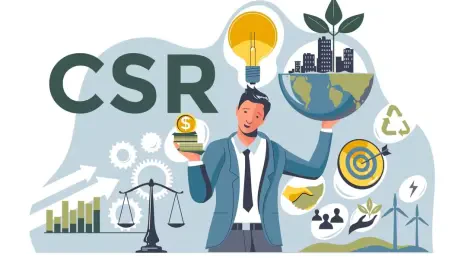California stands at a pivotal crossroads where industrial might meets environmental responsibility, with its manufacturing sector contributing a staggering $400 billion annually to the state’s GDP, making it the largest manufacturing hub in the United States. As this vital economic engine also accounts for roughly one-fifth of California’s climate pollution, the challenge is clear: how can such a powerhouse modernize to curb emissions without sacrificing economic strength? This report delves into the innovative strategies, legislative frameworks, and technological advancements driving the state’s transition to cleaner manufacturing, spotlighting a landmark policy that aims to harmonize industrial growth with the urgent need for clean air.
Overview of California’s Manufacturing Sector and Environmental Impact
California’s manufacturing industry is a cornerstone of the national economy, employing hundreds of thousands and fueling innovation across diverse fields from technology to food processing. With an annual economic output of $400 billion, the sector’s scale is unmatched, yet this dominance comes at a steep environmental cost. Industrial activities, particularly energy-intensive processes, contribute significantly to greenhouse gas emissions, representing a substantial portion of the state’s pollution footprint.
This environmental burden places California in a unique position, grappling with the dual imperative of sustaining economic competitiveness while addressing climate change. The manufacturing sector’s emissions, largely from fossil fuel-based heating and production, impact air quality and public health, especially in communities near industrial zones. Balancing these priorities requires not just incremental changes but a transformative approach to how goods are produced.
The push for modernization is thus not merely an option but a necessity. State leaders and industry stakeholders recognize that adopting cleaner technologies and practices is essential to reduce pollution without derailing economic progress. This report explores how California is navigating this complex landscape through policy innovation and strategic investments.
Key Developments in Clean Manufacturing with AB 1280
Core Provisions and Technological Advancements
A significant step forward came with the enactment of AB 1280, a groundbreaking bill signed into law by Governor Gavin Newsom to revolutionize the state’s industrial practices. This legislation targets the adoption of clean industrial technologies by expanding access to financial incentives, encouraging manufacturers to shift away from high-emission equipment. The goal is clear: reduce the sector’s environmental footprint while preserving its economic vitality.
Central to this initiative are programs like the California Energy Commission’s Industrial Decarbonization and Improvement of Grid Operations (INDIGO) grant program and the IBank’s Climate Catalyst Fund. These mechanisms provide crucial funding through grants and loans, enabling manufacturers to invest in zero-emission solutions such as heat pumps and thermal energy storage. These technologies, already commercially viable, offer the potential to slash nearly half of the sector’s heating-related emissions, marking a substantial leap toward sustainability.
The focus on actionable innovation underscores California’s commitment to leading by example. By prioritizing technologies that can be deployed at scale, AB 1280 ensures that environmental benefits are not just theoretical but achievable within a reasonable timeframe. This strategic alignment of policy and technology sets a precedent for other states and industries aiming to decarbonize.
Economic and Environmental Impact Metrics
The anticipated outcomes of AB 1280 extend beyond cleaner air, promising tangible improvements in public health by curbing industrial pollutants that exacerbate respiratory and cardiovascular conditions. Emission reductions from cleaner manufacturing processes could significantly lower the incidence of such health issues, particularly in vulnerable communities long exposed to industrial byproducts. This health benefit adds a compelling layer to the environmental argument for modernization.
Economically, the legislation is designed to safeguard and expand job opportunities within the sector. By tying funding to strong labor standards, AB 1280 ensures that the transition to clean technologies supports high-quality, middle-class roles rather than displacing workers. Projections suggest not only job retention but also the creation of new positions tied to the installation and maintenance of advanced equipment.
Looking ahead, these initiatives position California as a frontrunner in sustainable industry. The state’s proactive stance could attract further investment and talent, reinforcing its status as a hub for innovation. If successful, this model of integrating environmental and economic goals could inspire broader adoption across the nation and beyond, setting a benchmark for industrial transformation.
Challenges in Transitioning to Clean Manufacturing
Despite the promise of AB 1280, the path to clean manufacturing is fraught with hurdles, notably the sluggish pace of technology adoption. Data reveals that, over the past decade, less than 1% of the state’s Greenhouse Gas Reduction Fund has been directed toward industrial decarbonization. This meager allocation highlights a critical gap between ambition and action, stalling progress on emission reductions.
Funding shortages compound the issue, as does the urgent need for rapid implementation to align with global trends in sustainability. Many manufacturers, particularly smaller enterprises, lack the capital to invest in new technologies without substantial support. Additionally, the complexity of retrofitting existing facilities poses logistical challenges, slowing the transition even among willing adopters.
Addressing these barriers requires a multifaceted approach, including boosted investment from cap-and-invest programs to provide the necessary financial backing. Stronger policy measures to streamline adoption processes and technical assistance for manufacturers could also accelerate progress. Overcoming these obstacles is essential to ensure that California does not lag behind international competitors in the race toward a low-carbon industrial future.
Regulatory Framework and Stakeholder Support for AB 1280
AB 1280 establishes a robust regulatory framework that ties financial incentives to stringent labor standards, ensuring that funded projects uphold worker rights and fair wages. This requirement reflects a commitment to equitable growth, preventing the pursuit of environmental goals from coming at the expense of workforce stability. Manufacturers must demonstrate compliance with these standards to access grants and loans, aligning economic benefits with social responsibility.
A key focus of the bill is environmental justice, with priority given to projects in communities disproportionately burdened by industrial pollution. This targeted approach aims to mitigate the historical impacts of manufacturing on marginalized areas, improving air quality and health outcomes where they are most needed. Such provisions underscore the legislation’s holistic vision for sustainability.
The bill has garnered remarkable bipartisan support, uniting a diverse coalition of manufacturers, environmental advocates, labor unions like Sheet Metal Workers Local Union No. 104, and other stakeholders. This broad consensus reflects a shared recognition of the need for sustainable manufacturing as both an environmental imperative and an economic opportunity. The alignment of such varied interests signals strong momentum for the state’s clean industry agenda, fostering collaboration across sectors.
Future Outlook for California’s Sustainable Manufacturing
Emerging opportunities in clean industrial solutions present a promising horizon for California, with potential to maintain a competitive edge on the global stage. Innovations in energy-efficient processes and renewable energy integration could further reduce the sector’s carbon footprint, attracting international partnerships and investments. Staying ahead of the curve in these areas is vital for sustaining economic leadership.
However, potential disruptors loom, including evolving global standards for decarbonization that could outpace current efforts if not matched with agility. The state must remain adaptable, continuously refining policies to meet or exceed international benchmarks. This dynamic environment necessitates ongoing innovation in both technology and regulation to keep California at the forefront.
Sustained momentum will hinge on increased funding and deeper collaboration among stakeholders. Expanding financial resources through state and federal programs, alongside partnerships between industry, government, and advocacy groups, will be critical. Such collective action can ensure that the drive to reduce industrial emissions does not falter, supporting both environmental goals and long-term economic growth.
Conclusion: Balancing Clean Air and Industrial Strength
Reflecting on the strides made through AB 1280, it is evident that California has carved a path that intertwines environmental sustainability with industrial resilience. This landmark legislation stands as a testament to what can be achieved when diverse stakeholders rally behind a common cause, blending economic imperatives with the urgent need for cleaner air.
Moving forward, actionable steps emerge as the priority—scaling up investments in clean technologies through expanded cap-and-invest allocations is paramount. Strengthening technical support for manufacturers, especially smaller players, offers a way to bridge adoption gaps. Additionally, fostering continuous dialogue among policymakers, industry leaders, and communities promises to refine strategies over time.
Ultimately, the journey ahead demands vigilance and adaptability to global shifts, ensuring that California’s manufacturing sector remains a beacon of innovation. By committing to these next steps, the state can solidify its legacy as a leader in sustainable industry, delivering lasting benefits for both the environment and future generations.









